Risk assessments
I was expecting treeworld risk assessments to be the same as techworld, but they are different... so let's talk about risk assessments in treeworld and give a real world example.
When I think back to my initial days of first year at treeschool, I remember that we climbed. “Straight into it” I recall to people when they ask. But when I really, really think about it that’s not entirely true. Before we climbed, we covered risk assessments and we did one. It’s easy to see how the mind would play such a trick on someone and erase the topic because in all honesty you have to struggle to make risk assessments interesting. We did a risk assessment first, albeit a verbal one, because climbing introduces the possibility of accidents. The risk assessment got us to think about how those accidents could happen along with the various things we could do in order to minimise or eliminate the possibility of an accident happening. Sensible.
What is a risk assessment?
Essentially, it is a list of all the stuff that can go wrong and a set of instructions to avoid stuff going wrong. Once you have that list, you then can choose to do one of four things. Eliminate the risk by not doing the thing, mitigate the risk by doing the thing but with some precautions (called controls), transfer the risk to someone / something else by getting someone else to do the thing or accept the risk and just crack on.
Why have a risk assessment?
In treeworld, if something sufficiently undesirable should happen on a job site you can expect a visit from the local authority. If the situation warrants it, then you may also find that you garner enough interest from the Health and Safety Executive (HSE) that they deploy a minion to investigate what happened. You may also find yourself in a court of law defending your actions. Even if the thing that happened wasn’t your fault, if you didn’t have a risk assessment you’re going to have a much harder time defending yourself.
Are risk assessments an arse covering exercise? Yes. Can risk assessments be useful? Yes. Can risk assessments be nothing more than paperwork and a total waste of time? Absolutely. So what makes the difference? I’d argue that it is relevance and due diligence. The thing with risk assessments is that the garbage in, garbage out (GIGO) principal applies. If your analysis of possible risks contain things that are both likely to happen and that have non-desirable impact, then your risk assessment stands a chance of being useful. If however, your analysis of possible risks is based in theoretical nonsense at the far end of a fart, then not so much. This latter kind of risk assessment is what gives risk assessments their bad names1.
In the UK if a risk assessment is required as part of the job you are doing, then the Management of Health and Safety at Work Regulations and the Health and Safety at Work Act applies. In short, if there are more than five people on a job site, then a written formal risk assessment must be present and it must be acknowledged by all of the operators on site. If there are less than five people, then you can get away with a verbal or scribbled down toolbox talk. However, it’s probably best to just do the risk assessment so that it is done.
I’m going to cover two types of risk assessment in this post. Once I’ve covered the two types of risk assessments, we’ll look at a real world example of work I’m about to do in the woodland and the risk assessment to go with it. Honestly, I hope you find it somewhere between entertaining and informative.
If something changes in the future, I will update this post2
1. The risk matrix - 5 × 5
Commonly called “five by five”, this is the style of risk assessment that I worked with in Techworld when preparing SoPost (pre-treeworld employer) for their first ISO27001:2013 audit3. We don’t use or cover this type of risk assessment at treeschool but I've been using it for over six years. I'm including it for reasons that become apparent later on.
The system is pretty simple and there are two key parts. The first is likelihood/impact and the second is risk appetite.
Likelihood / impact
Likelihood is a shorthand term that translates into “the likelihood of a thing happening” and impact is another shorthand term that translates into “the impact on your universe if that thing happens”. One thing I’d like to point out and it may be something that only I do, but I like to interpret 50/50 as Schrödinger's cat. That is to say, I view 50/50 as “don’t know”. If I am not able to accurately determine the probability of something, then I treat it as “it may happen, it may not happen – 50/50”.
Below is a grid. On one axis we have likelihood and on another we have impact; both are scales with a description and a score. The score is calculated by multiplying one scale with another. If we have a likelihood of highly probable (5) and an impact of minor (2) then we get a score of 10, or if we have a likelihood of 50/50 (3) and an impact of minor (2) then we get a score of 6. This is all pretty simple, there are no complex maths here although this calculation does technically class as an algorithm if you want to be all fancy pants about matters.
Each scale is designed to be “good enough” for a gut feeling. People new to this tend to over egg the pudding and everything is “highly probable” and “catastrophic”. As you get sick of dealing with controls, people tend to chill a bit and that’s when their scoring starts to become realistic.
So that’s the idea with the grid. The first part is that you calculate a score by multiplying likelihood with impact. This score is then used in the second part of the 5×5 process.
Risk appetite
Risk appetite is a way of deciding how much risk you are prepared to accept before you do something about it. It is expressed as a number. Anything lower than the number is typically green because it doesn’t require a control measure. Anything over that is typically yellow or red to indicate DANGER DANGER.
My risk appetite is nine. This means that as an operation consisting of just me I am happy to accept risks that have up to 50/50 chance of medium impact.
When to use a 5×5
Whilst being hit by a comet from outer space would be catastrophic (5) for all concerned, the chances of that actually happening are highly improbable (1). So that scores as 5 (5 * 1 = 5). With a risk appetite of 9 this means that you accept that a comet may hit you and despite being catastrophic, the chances of it happening are so low that you give zero shits about it. So don’t account for it in your risk assessment and crack on.
You can also use the scoring from 5×5 to prioritise the controls from the second kind of risk assessment. Which leads nicely onto…
2. Machine, task, site & emergency procedures.
This is the second type of risk assessment and is the one we’re covering at treeschool because it features in all the NPTC guidance.
It is based on three areas – “machine”, “task” and “site”. These three areas are then subjected to a process where for each area, you identify the hazards, decide who or what may be harmed, implement controls to remove or prevent the harm and then record the findings either in a document of some sort or a conversation with your crew. To accompany the risk assessment there are emergency procedures that detail what to do in a SHTF4 situation. Any changes to the job in terms of machines, tasks or site (including impactful weather events) requires you to revisit your risk assessment to ensure it is still correct.
One good thing about this process being in three parts (machine, task, site) is that for the most part the machine and task assessments are always the same in the sense that a chainsaw is always a chainsaw and felling a tree is mostly always felling a tree. Sure, some site dependant conditions may alter the task (working on a steeply sloped hill for example) but for the most part they stay the same. This offers an efficiency as you can reuse and pre-train your crew before hand – as long as what you use is correct and relevant.
The emergency procedures are a bunch of information that comes with the risk assessment. It contains information such as:
site location - OS grid references, long/lat and where there is one, a physical postcode.
site access - do you need an offroad capable vehicle or can you access the site in a typical consumer vehicle?
mobile signal - can you actually make call to emergency services? If not, where is the nearest signal point?
site manager / land agent - who would you call to give notification of a major event or if you had to leave hung-up trees?
job manager - who would someone call to speak to the person on the ground leading the operators doing the work?
meeting place - the place where everyone is to meet in an emergency situation.
nearest access point - including any gate information such as who has keys for locks or any combination codes that may be needed in the event of an emergency.
nearest accident and emergency hospital - and the phone number so you can phone ahead with details of the incoming trauma patient.
nearest local doctor - and their phone number. It could be in more remote places that the local doctor is closer than the nearest A&E which could be a hundred miles away or more.
I also like to include a pre-written description of how someone would get from the nearest access point to the meeting place. I am not sure that I’d be able to think clearly enough in an emergency to accurately describe to someone how to get to the meeting place. In a stressful situation we tend to lose a lot of our intellectual capacity. By taking the time to write it out in such a way so that someone could read it makes a lot of sense to me. Maybe I am wrong. Generally speaking though, it is normally better to have something and not need it, than to not have it and need it.
So that’s the structure of treeworld risk assessments. You list all the risks according to task, machine and site and compile your emergency procedures. If you want to be fancy pants, you can score your risks so you can see where you’re most sketchy.
Speaking of sketchy …
Risk in the real world - Sketchy birches over a private track.
In our woodland there are many hazard trees that are windblown or rotten. They all need to be dealt with eventually, but there is priority queue. The lightning tree has now been done and so everything moves up the queue. The next job is a group of uprooted birches over the private track.
I've uploaded some images to assist in visualising the job. You’ll notice from the map that they are right on the footpath5 which you can see from the perspective of a driver in one of the photos. The other photo shows the super sketchy access and working conditions. Working on these trees means working on a reasonably steep bank with awful and limited escape routes. Also, it's a pretty hefty tree. Check the picture with the backpack on the root plate for scale. As you can see the base of the stem is over the 380mm mark which would make it the biggest tree I've dealt with. And so something I have to account for in my risk assessment.
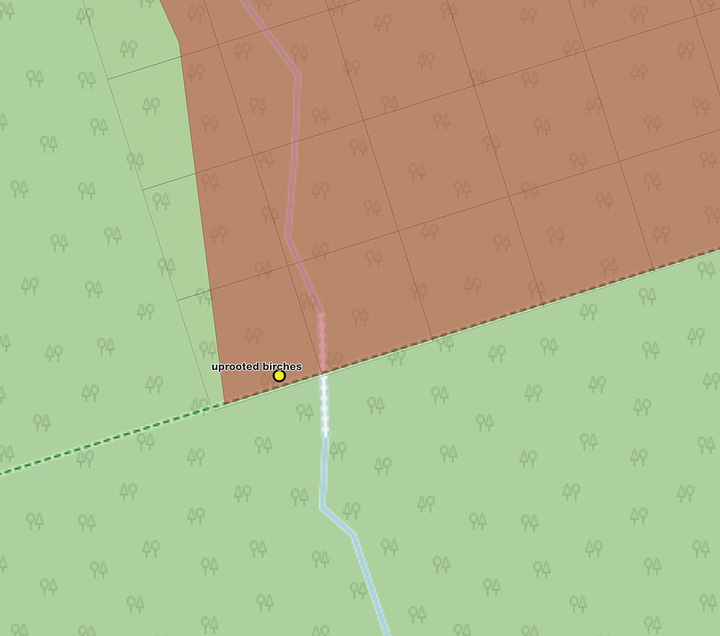
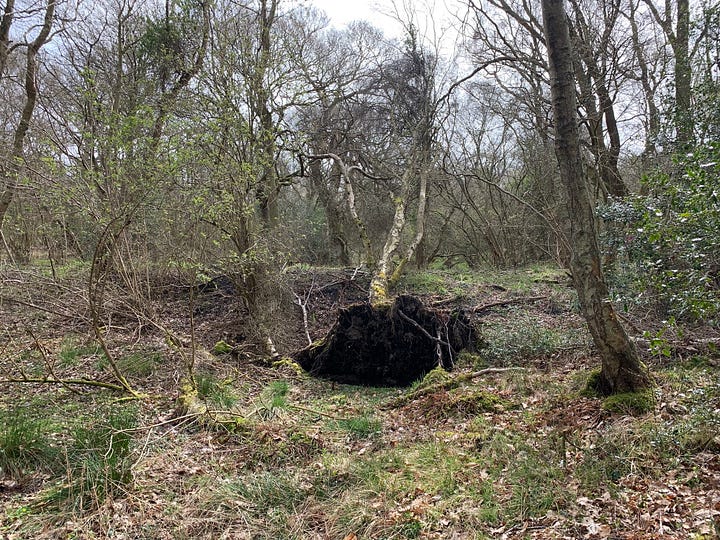
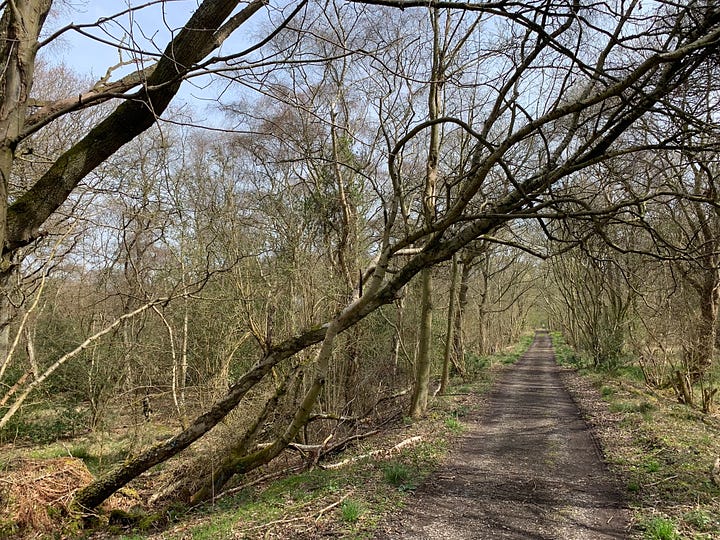
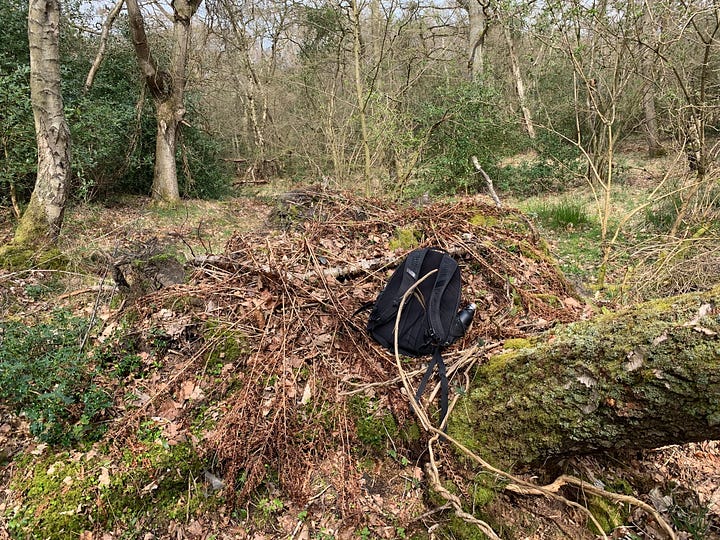
So for this job I’m going to need chainsaws, a felling lever for rolling stuff, a winch for securing root plates and pulling tree stems and finally handtools such as saws, files and my axe. These are the machines.
With those machines I am going to be felling some trees, but some of these trees are windblown, which is its own specialist field and I am not a fully trained operator in (which I address in the risk assessment). Once the trees are safely down, then I’ll need to sned them (remove the branches) and crosscut the remaining wood into whatever specification I decide. Next I’ll have to move the logs and arisings manually and finally get the path clear of any debris that could cause damage to the vehicles of other residents who also have woodland. These are all the tasks.
I’ll be doing these tasks in a private woodland, next to a private footpath on which members the public and their dogs tend to walk along. Their puppers being something of a concern as often they are off the lead, well ahead of their owners and oblivious to the world as they are trapped in a wonderland of smells. Working conditions are not ideal. The ground is boggy, escape routes are either uphill or cluttered with brush or blocked by holly and birch. These are the site details.
Assessing all of the risks.
Rather than bloat this post up with the full risk assessment, you can view it here.
The sheet that contains the assessment is pretty straightforward. There are separate sections for task, site and machine. Each section has a lists of risks in there, that I’ve used the 5×5 grid to figure out what I the score of the risk is. Each risk then has a decision to eliminate, mitigate, accept or transfer. If the action is to mitigate, then a bunch of controls are listed and the risk is then re-assessed with the controls in mind which gives a new score and a final decision. The main page of the risk assessment is a summary which lists all of the risks, ordered by the risk score along with the final decision on that risk.
I’m not sharing the emergency procedures because that would give away the location of the woodland and I’ve not yet decided if I want to do that yet.
So go have a look at the risk assessment (or not) and come back once you’ve read it.
BUT THOSE RISKS!
If you’ve looked at the risk assessment you may be wondering why I’ve chosen to accept a bunch of risks that score way above my risk appetite of nine. The answer is simple - because I want to. I accept that a big part of learning is operating outside of a comfort zone. I also accept that treework can be dangerous. Therefore as a student of treework, I have no option but to operate outside of my comfort zone so that I can become comfortable with it. I’m never going to put myself knowingly in harms way, but I may do it accidentally - I accept that. When that happens, the steps I’ve outlined in risk assessments may very likely remove or reduce any harm that should befall me. If I was operating a more mature organisation with employees, I’d be a lot more cautious and my risk appetite would more than likely be in the six to eight range.
You may also have noted when you looked at the pictures of the job that you may have thought something like “yeah fine, a bit sketchy, but looks ok” and then after you read the risk assessment that changed to “hmm, looks more sketchy”. This is the point of risk assessments – they to get you to think, weigh things up and figure out what you’re going to do about those things. Of course, do remember that I am a student of this stuff and if you’re a veteran tree worker of X years, then you’ll probably have an entirely different perspective of the job. To you it may be a “winch that, chop this, then winch that”.
They also make sure that everyone on the job is on the same page about the risks and what is to be done. This makes the whole operation less prone to operator error as we all understand what is to be done and why.
Wrapping up
Risk assessments are not new to me. The task, machine and site method is, but the concept is not. I’ve been dealing with risk management since 2016 using the 5 × 5 method. I used to think risk management was bullshit – “How you can predict what will go wrong?” was my position. You can’t, but that’s the wrong way to think of risk management. Risk management is all about considering what could go wrong and what you can do to avoid it.
We do it all the time. If you drive and you check your mirrors before you make a move in your car then you’re practising risk management. Obviously it isn’t written down, but you’re doing it. At first it is awkward and feels clunky to mindfully adjust behaviour and say out loud to your instructor “checking my mirrors”. Over time, a few years into driving it becomes an instinct that is quite natural and free of the verbal queue. This is much the same of many of the risks in a treeworld risk assessment. Of course, after a few years in treeworld, I imagine the game then transforms into not being complacent about risk. In treeworld respect must be paid to risks with mindful attention and acknowledgement. Treeworld only needs to harm you once – you need to walk away from treeworld unscathed every time and so the deck is stacked against you.
In treeworld (or at least in treeschool) before a tool is touched or tree is climbed, risk assessments are to be carried out. They focus on the task, machine and site method and don’t mention the 5 × 5 method. I’ve included the 5 × 5 method as part of my risk assessment process as I’m very used to it, find it very useful and it helps me “see the big risk picture”.
To give some examples of my big risk picture I know that operating without EFAW+F (emergency first aid at work plus forestry) is a risky business. I fully intend to do something about that over the summer. A second example is business insurance. Working commercially without insurance is a form of reckless corporate suicide which is why I am not generally available for work. I’ll do a commercial job only where I feel like I’ve mitigated all of the risks to the public and myself. On the flip side of the risks I intend to mitigate are all the risks that I accept. For example; all of the the wind blown trees that I have to tackle in the woodland. They are all hazards and they all need to be dealt with. I will be dealing with them. I am not formally qualified to do so, but with each tree I learn a bit more. I accept the risks involved. Then there are the risks that I choose to eliminate for the time being, an obvious example being climbing. I’ve had climbing gear since October 2022 and I’ve known how to use it. However, as a novice climber I know that climbing alone in a woodland is just too risky. Hence, you’ve not seen me do any climbing outside of treeschool.
I'm not ignorant of all of the risks involved in the things I do, but neither am I afraid of them – I respect them and understand the fact that I have much to learn. If a risk is too much (climbing alone) then I’ll walk away from it. I am not afraid to do that. Where I choose to accept higher risks, I’m also aware I’ve probably missed a few risks and I’m leaving myself open to harm and learning the hard way. I accept this because on the other side of a risky situation is a learning experience. It won’t always be a glory soaked epic win and more times than not it’ll be a soul sucking fail. However, I am a student and students must learn. I learn best by doing stuff and there’s only one way to do that. Of course, that doesn’t mean I should be reckless and so there is always an assessment of risk. It may not always be written or typed out into a spreadsheet, but it is always there.
I hope I’ve explained treeworld risk assessments in a clear way and mapped it onto a real world example. Any questions or comments, please do ask away. The only silly question is the one that was not asked.
Over the course of time, it may be the case that “legal people” start bloating a a good, focused assessment into a far end of a fart type assessment. The struggle is real.
That may be the worst risk assessment joke in the world.
An absolute weapon of a human being did the majority of the work. He was my replacement. The name is Harvey, Simon Harvey.
Shit hits the fan - SHTF
It is a private footpath, with no public right of way, so the Occupiers liability Act doesn’t apply.



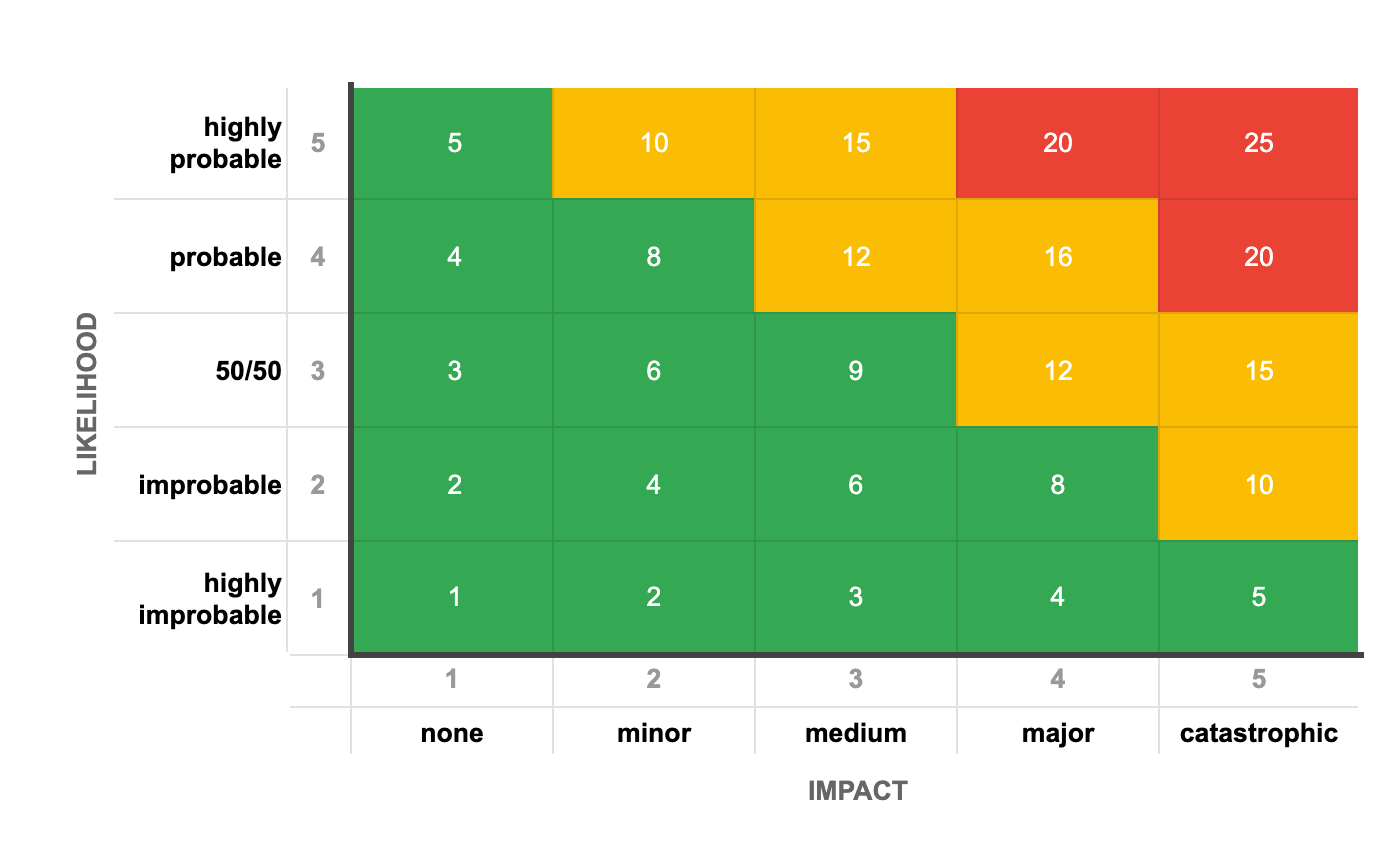

Today's word is 'sned' -- a really good word :-)